Even a basic daily routine such as showering can significantly influence our health. Now that summer is here, showers become particularly essential. Choosing optimal bathing practices, from water temperature to selecting the right shampoo, can significantly enhance our hygiene routines. Explore how bathing conditions and the products we use play a crucial role in maintaining both hygiene and skin health.
5 View gallery
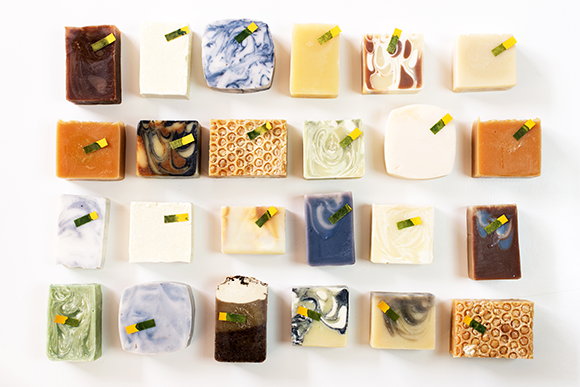

How should we bathe? Enhance your hygiene routine with optimal bathing practices, Solid soaps
(Photo: P-fotography, Shutterstock)
Bathing temperature
An important consideration when choosing your bathing temperature is its effect on your skin pores. Pores are tiny openings in the skin through which sweat and an oily substance called sebum are secreted. Blocked pores can lead to acne, a skin condition commonly known as pimples. Pimples are particularly common in the facial area, but can appear on nearly any part of the body, including the scalp, neck, back, shoulders and chest.
Hot showers can be very soothing and effective at cleaning the skin and removing dirt from the pores. However, it is not recommended to shower in hot water too frequently as frequent cleaning of the skin in hot water can cause increased fluid loss and lead to dry, oily or overly sensitive skin.
In contrast, cold water has a different effect on the skin. It causes the tiny muscles around the hair follicles to contract, similar to the “goosebumps” effect. This muscle contraction indirectly affects the pores, making them less noticeable and giving the skin a smoother appearance. Cold showers can also help reduce swelling, skin inflammation, and redness, which can be beneficial following exfoliation, use of certain cosmetic products or after cosmetic treatments. However, cold water is less effective at cleaning the pores since it is less efficient at releasing trapped dirt and oils.
The optimal approach? Opt for a shower with warm or tepid water for effective cleansing without risking dry or itchy skin. If you desire a slight pore-tightening effect, you can end your shower with a quick rinse of cold water, keeping in mind that the perception of pores contracting is more of a sensory effect than a physiological one.
5 View gallery
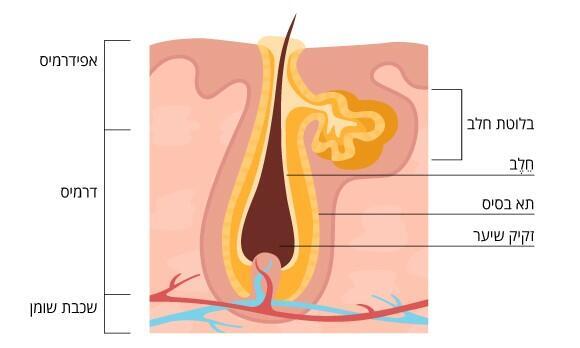

Excessive secretion of sebum may block pores and cause acne. A hair follicle and a sebum gland
(Photo: inspiring.team, Shutterstock)
Soap acidity (pH)
One important property of substances is their acidity, indicated by pH and typically ranked on a scale of 0–14. Substances are classified as acids (pH 7 and below) or bases/alkalis (pH 7 and above) and can be distinguished from one another by their chemical properties.
The acidity of the soap is crucial for maintaining healthy skin. Our skin has a slightly acidic pH, usually ranging between 4.1 and 5.8; an unbalanced pH can lead to skin problems.Many products, especially alkaline soaps with a pH of 10 and above, affect the spatial structure of skin proteins, potentially weakening the skin and increasing the risk of injury and infection. It's best to choose products with a slightly acidic or neutral pH (5–7), which are gentler and help maintain the skin’s natural elasticity. Soaps with a pH as close as possible to the skin's natural pH will help us minimize damage and keep our skin healthy.
The skin microbiome is a diverse ecosystem comprising different species of bacteria, viruses and fungi, playing an important role in overall skin health. A balanced microbiome contributes to the skin’s defense mechanisms. Frequent bathing, particularly with solid soaps, which tend to be more alkaline, can harm the microbiome and disrupt its balance. This disruption can inadvertently favor populations of harmful bacteria that no one wants on their skin. Therefore, choosing mild, non-irritating soaps and using warm water instead of hot water can help maintain a healthy microbiome.
5 View gallery
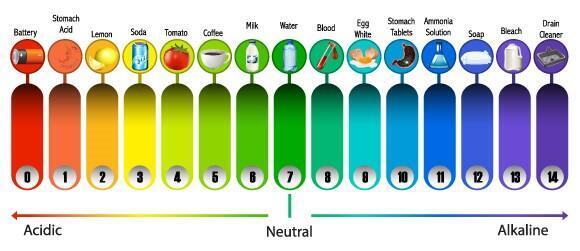

Alkaline soaps with a pH of 10 and above affect the spatial structure of skin proteins. Different substances on the pH scale
(Photo: BlueRingMedia, Shutterstock)
Body or hand soap?
The distinction between hand soaps, body soaps and body washes is based on their intended use. Hand soaps, designed for frequent use, often contain strong cleaning agents, including surfactants and alkaline substances. While effective against bacteria and fungi, their high pH can dry out the skin. If your hands are dry, it may be due to a harsh hand soap; consider switching to a soap that contains milder ingredients or added moisturizers.
Body soaps and body washes are generally gentler than hand soaps They typically include moisturizing agents and gentler cleaning substances, making them more suitable for parts of the body with more sensitive skin.Body washes, in particular, often contain additional skin softeners and are available in various fragrances.
5 View gallery
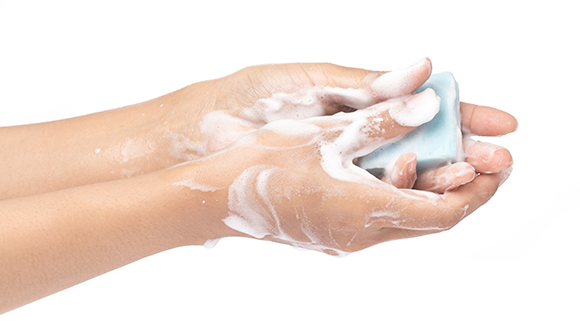

Hand soaps often contain stronger cleaning substances compared to body soaps. Hand soap
(Photo: Yellow Cat, Shutterstock)
The chemistry of shampoo
Choosing the right shampoo starts with understanding its ingredients. The active ingredients in shampoo are compounds that produce foam and remove dirt, dead skin cells and oils from the hair. These compounds, known as surfactants, have two ends: a hydrophobic ("water-fearing" in Greek) end, which is soluble in fat, and a hydrophilic ("water-loving") end, which is soluble in water.
The hydrophobic part binds to fats and dirt, while the hydrophilic part dissolves in water, allowing the dirt to be washed away with the water. While some common compounds may irritate the eyes, skin, and scalp, they pose minimal health risks when used in low concentrations and for short durations. Gentler alternatives, such as decyl glucoside, are commonly found in baby shampoos.
Conditioners help repair the damage caused to hair by the environment, and may even prevent future damage. Hair fibers have a negative charge, and exposure to static electricity causes the hair to become frizzy. Conditioners contain positively charged ingredients that neutralize the negative charge of the fibers, preventing this effect and making hair more manageable.
They also coat each hair fiber with a protective layer, reducing friction between neighboring fibers, which may cause breakage. This reduction in friction gives the hair a smoother, shinier appearance. Some conditioner ingredients act as "bridges," filling in cracks and damaged areas in the hair's outer layer, enhancing flexibility, strength, and moisture retention.
5 View gallery
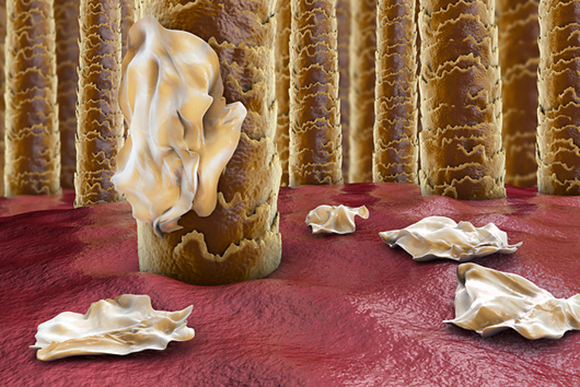

Dandruff forms on the scalp when the process of shedding dead skin cells is particularly fast. A scalp with dandruff
( Illustration: Kateryna Kon / Science Photo Library )
Dealing with dandruff
Dandruff forms on the scalp when the process of shedding dead skin cells is particularly fast. Several factors can contribute to the acceleration of this process, including dry skin, sensitivity to hair products, and primarily the activity of a fungus called Malassezia. This fungus feeds on the oily substances produced by hair follicles, disrupting the scalp's natural defenses and leading to increased skin cell turnover, which subsequently peel off and shed.
Anti-dandruff shampoos are formulated with ingredients such as ketoconazole, zinc pyrithione, salicylic acid and selenium sulfate, which help reduce dandruff. Ketoconazole and zinc pyrithione fight the Malassezia fungus directly, salicylic acid helps remove dead skin, and selenium sulfide fights the fungus while also reducing dandruff production. Although less common due to its odor and potential to stain, coal tar offers additional antifungal and antibacterial properties. Choosing an appropriate shampoo can help improve scalp health and alleviate dandruff symptoms.
In conclusion, optimizing our bathing and cleansing routines requires awareness of available options and, equally importantly, consideration of our body's specific needs. Choices such as showering in cold or hot water, using liquid or solid soap, and other preferences will significantly impact the health of our skin and hair.

